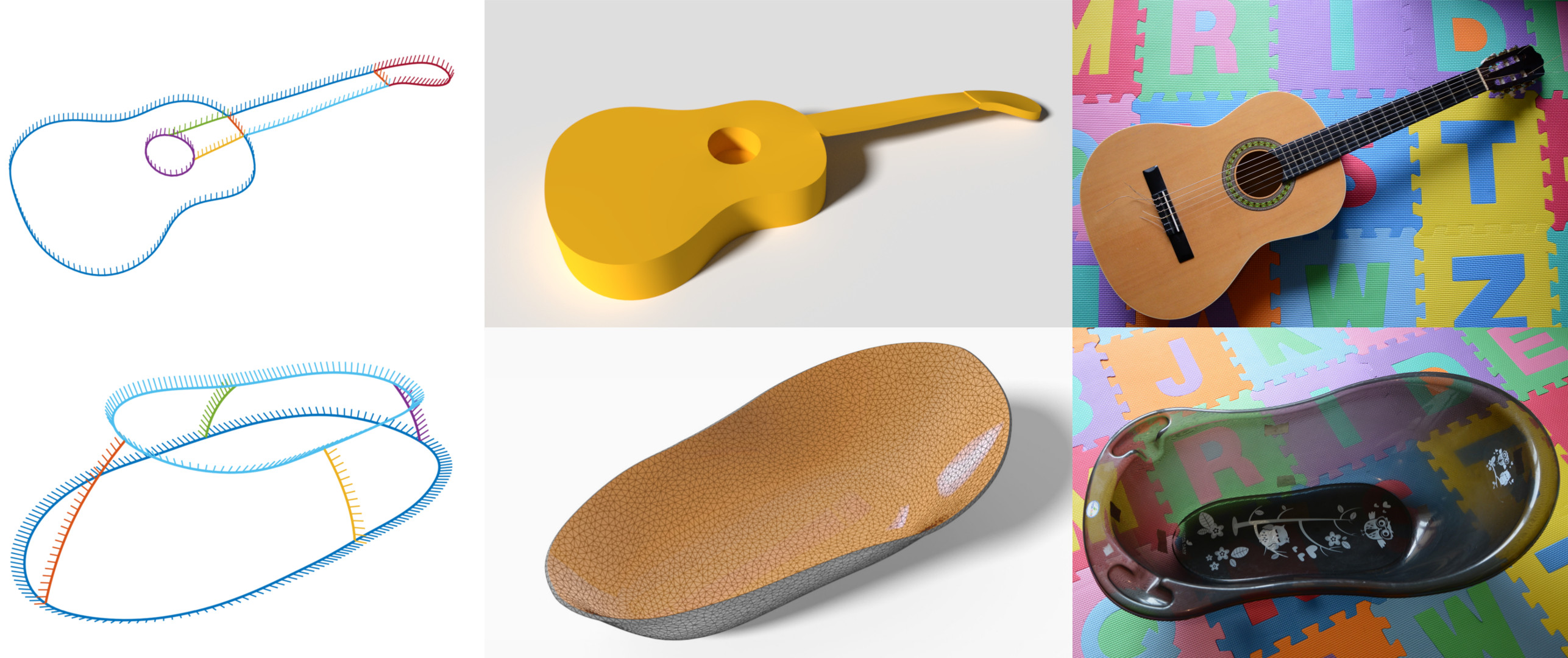Shape from sensors: Curve networks on surfaces from 3D orientations
Best Paper Award
We present a novel framework for acquisition and reconstruction of 3D curves using orientations provided by inertial sensors. While the idea of sensor shape reconstruction is not new, we present the first method for creating well-connected networks with cell complex topology using only orientation and distance measurements and a set of user- defined constraints. By working directly with orientations, our method robustly resolves problems arising from data inconsistency and sensor noise. Although originally designed for reconstruction of physical shapes, the framework can be used for “sketching” new shapes directly in 3D space. We test the performance of the method using two types of acquisition devices: a standard smartphone, and a custom-made device.
Downloads
- paper ~ 10.4 MB
- paper, lowres ~ 2.7 MB
Video
Acknowledgments
This research was partially funded by the ERC advanced grant no. 291184 EXPRESSIVE.
BibTeX
@article{ Stanko:2017:SMI,
title = {Shape from sensors: Curve networks on surfaces from 3D orientations},
author = {Tibor Stanko and Stefanie Hahmann and Georges-Pierre Bonneau and Nathalie Saguin-Sprynski},
journal = {Computers \& Graphics (Proc. SMI)},
publisher = {Elsevier},
volume = {66},
pages = {74-84},
month = {8},
year = {2017},
doi = {10.1016/j.cag.2017.05.013}
}
Results

Sensor-instrumented devices used for data acquisition.
Left: a custom-made prototype (Morphorider).
Right: a standard smartphone.

The mushroom network created from scratch entirely with a smartphone. Curve lengths were estimated from acquisition time.

Guitar and bathtub scanned using the Morphorider. Left to right, reconstructed networks, surfaces computed from the networks, the scanned objects. The guitar shape was created by extruding the surfaced network.

Inspired by the image on the right, we created a 3D model of the sailboat by sketching the network on the left with a smartphone. The lengths were estimated from time of acquisition.
Reconstruction of
lilium
with various filtering weights. Left to right in each row: reconstructed network with porcupine plot (surface normal scaled by curvature); Gauss map; curvature plot.
(click on the image for a higher resolution)

